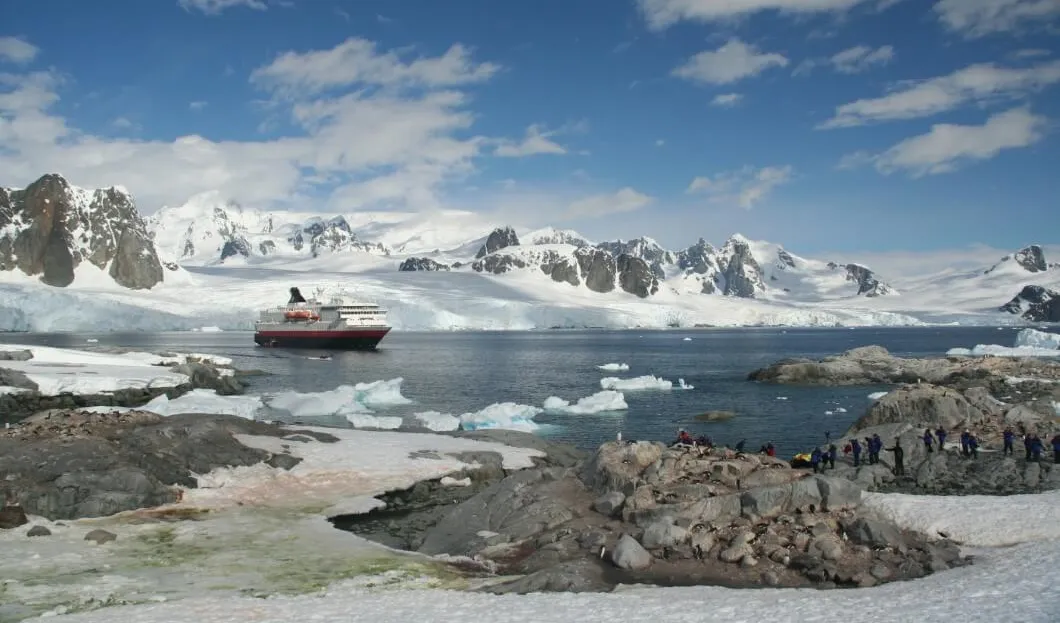
The massification of tourism in Antarctica, one of the last sanctuaries on the planet, poses a number of environmental problems. Among others, the risk of seeing marine species invade the polar biodiversity.
While the white continent is the dream of more and more travelers, tourism in Antarctica is an environmental aberration. In addition to polluting and harming terrestrial animals, these expeditions, which cost up to 15,000 euros and are reserved for a certain elite, threaten the marine wildlife of this fragile ecosystem.
Indeed, the tourist boats coming from all over the world bring invasive species into the waters of the Southern Ocean on their hulls. This is precisely what a recently published study by the British Antarctic Survey and the University of Cambridge reveals.
The report focusing on fishing and tourism vessels that regularly visit this remote region reveals that the ships that sail off the Antarctic coast come from 1,500 ports around the world. And that's problematic. Because "almost any place can be a potential source of invasive species [which] can completely change an ecosystem," researcher Arlie McCarthy of Cambridge University said. "They can create entirely new habitats that would make it harder for Antarctic animals to find their own place to live."
Potential Invaders: Mussels, Crabs, and Algae
Potential invaders include any marine species that can attach to a ship's hull and survive the journey to Antarctica. Mussels, barnacles, crabs, and algae are of particular concern because they attach themselves to hulls in a process called biofouling. Mussels, for example, can survive in polar waters and spread easily, threatening marine life on the seafloor. Their filtering of the water alters the marine food chain and the chemistry of the water around them.
The native species of Antarctica are singularly fragile since they "have been isolated over the last 15 to 30 million years," says David Aldridge, a professor at the University of Cambridge. Invasive species represent one of the greatest threats to biodiversity in the region. And the risk of losing endemic species is, therefore, higher in Antarctica due to the tourist boats.
It is true that tourist boats bring back some potentially invasive species. But they are not spreading for the moment. Antarctica remains "the last place in the world where we don't have invasive marine species. So we [still] have the opportunity to protect it," says Arlie McCarthy.

Clean and Inspected Hulls
To ensure that new species do not disrupt the South Pole's fragile habitats, scientists are calling for the urgent implementation of strict rules for ships. The current measures, which consist in cleaning the hulls of ships, are only in force in a few ports of entry at the gates of the continent.
The British Antarctic Survey, the British national operator in Antarctica, uses sniffer dogs to search for rats or mice onboard research vessels. But the organization now wants "improved biosecurity protocols" and more precautions to safeguard the southern waters. This means, for example, inspecting the hulls of the boats with cameras and cleaning them more frequently.
These measures are particularly important in the face of climate change, which suggests new threats, such as rising ocean temperatures.
Over 70,000 Travelers in One Year
To determine the weight of traffic on the southernmost continent of the planet and the origins of the ships, research teams used satellite data and international shipping databases.
As a result, the ships that connect the most isolated parts of Antarctica to the 1,500 ports around the world come mainly from South America and Europe. The study also revealed that tourism accounts for 67% of visits to Antarctic sites, well ahead of research, which accounts for 21%, and fishing, 7%.
According to the International Association of Antarctic Tour Operators, the 2019-2020 season has seen more than 70,000 people visit the region. While the area has been disrupted by the Covid-19 pandemic, that number has steadily increased since the first hundreds of visitors from Chile and Argentina arrived in the South Shetland Islands in the 1950s.
But the massification of tourists is not without consequences. "Wherever these ships go, we see other types of human impact on the environment, whether it is accidental waste dumping, pollution, collisions with wildlife or noise pollution," warns Arlie McCarthy.








